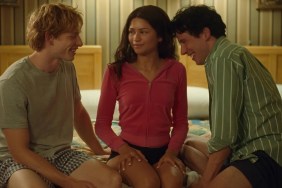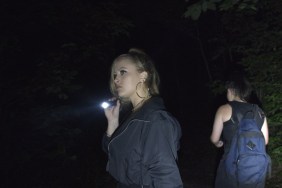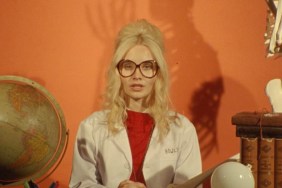
I first watched Belle de Jour back in March of 2009. Unfortunately I didn’t write about it at the time, which gives me nothing to look back on as far as my interpretation of what I saw. Considering we’re talking about the work of surrealist director Luis Bunuel it would have been nice to refer back to something, but sometimes life gives us oranges.
What I watched then was a rented Netflix copy of the previously released Miramax DVD version of the film, which, to my recollection, didn’t include any special features. Fortunately Criterion is here to save us on that front with an excellent high definition transfer and uncompressed monaural soundtrack, but on top of that an outstanding audio commentary and one specific featurette I found incredibly enlightening.
As for that first viewing of Belle de Jour, I remember having a conversation about the film’s ending and confusion over what I assumed to be real and what was fantasy. Of course, that’s all part of the fun when it comes to Bunuel’s unique handling of the material and an open ending well worth discussion. Not to mention a performance from Catherine Deneuve that immediately captures your attention from her striking features to the subtlety of her actions.
As I noted in my review of Roman Polanski’s Repulsion, Deneuve is an actress whose work frequently captivates and is ever changing. Throughout her career she has constantly explored new characters and situations, testing her abilities as an actress. Here, as Severine, she plays a bored, bourgeois Paris housewife whose masochistic tendencies begin to get the better of her as the line between fantasy and reality begins to blur.
Unable to connect with her husband physically, Severine finds herself drawn to a bordello where she goes by the name Belle de Jour, affording her the opportunity to explore the sexual freedom she’s unable to bring herself to commit to at home with her devoted husband (Jean Sorel). Her afternoons away introduce her to a variety of johns and fetishes, one of which ultimately puts her secret life in jeopardy.
The interest in this film comes entirely as a result of the way Bunuel plays with the psychology behind Severine’s desire and the way in which he tells the story, not entirely committing to either side of Severine’s psyche just as much as he never offers a definite interpretation of the material. What is real? What is not?
Certainly some scenes are fantasy, such as one in which Severine is shot in the face, but Michael Wood, author of the BFI Film Classics book Belle de jour, touches on this very scene in his excellent accompanying commentary track, looking for meaning in the fake blood smeared across her cheek as her husband tends to her “wound”.
Wood, however, opened my eyes to something quite fascinating regarding Bunuel’s approach to the ending with an interpretation that doesn’t necessarily offer up what he believes to be real and/or fantasy, but more of a “Why?” interpretation of Bunuel’s handling of the finale.
Wood enlightens us as to how the ending deviates from the novel by Joseph Kessel (from which the film was adapted) to the extent he even reads the last lines of the final chapter to give us some idea of how Bunuel and co-writer Jean-Claude Carriere have adapted the material (though in an included interview with Carriere he explains how the ending was all Bunuel’s idea).
As for Wood’s interpretation of the ending, it has nothing to do with story spoilers, so don’t think I’m ruining the film for you. Wood has not specifically interpreted the scene on screen, but instead interpreted Bunuel’s handling of the situation:
Bunuel is suggesting something happens here and nothing good can happen. The happy ending would be bad because it’s too easy and the unhappy ending is bad because it would be too hard, and there is no middle ground between too easy and too hard. So in effect, what Bunuel shows us is both of those things although they’re a little hard to disentangle.
I love this interpretation. Bunuel has afforded himself the chance to essentially cop out with his ending. This is to say he didn’t want to do one thing because it would be too easy, but he couldn’t quite crack the other aspect because it was too hard. So, instead of deciding one way or another he gives you both, which offers a gray area open for interpretation, though no one answer is necessarily correct.
Wood offers a Bunuel quote during the commentary in which Bunuel said of the film: “In the end, the real and the imaginary dissolve into each other. I myself couldn’t say what was real and what was imaginary in the film. For me they form a single thing.”
I agree with Wood in that Bunuel is being a bit disingenuous here as some scenes are easily interpreted as fantasy, but when it comes to the film’s conclusion the way he leaves it open is excellent filmmaking and the fact there isn’t a right or wrong answer as much as there is simply an interpretation of the scene that runs the risk of leaving you happy, sad or confused speaks to something more. Let’s look at that now.
The second feature that opened my eyes is a new video piece featuring writer and sexual-politics activist Susie Bright and film scholar Linda Williams. These two introduce the strength of female sexuality as well as bring Sigmund Freud into the conversation. Given Severine’s tendencies for masochistic sexual behavior it draws an immediate comparison to Keira Knightley‘s character in David Cronenberg’s A Dangerous Method and the “cure” she explores with Carl Jung played by Michael Fassbender.
Perhaps this film could be viewed as a sit down with a psychiatrist as Severine is relaying her story, mixing reality with fantasy and vague recollections of the truth combined with what her heart (and loins) truly desires. At the end of such a sitting the patient could be left with an answers to their concerns that leave them satisfied or sad, but most likely they will be left with a gray area, at once satisfied, sad and content, never knowing which exactly.
It was the combination of this thought with Wood’s interpretation that really opened this film up for me and I fully admit it isn’t an interpretation that’s fully fleshed out. I’m sure another watch would either cause this interpretation to hold water or prove leaky. Either way, this film is an exploration and Criterion’s presentation and supplied supplemental features further the journey.









